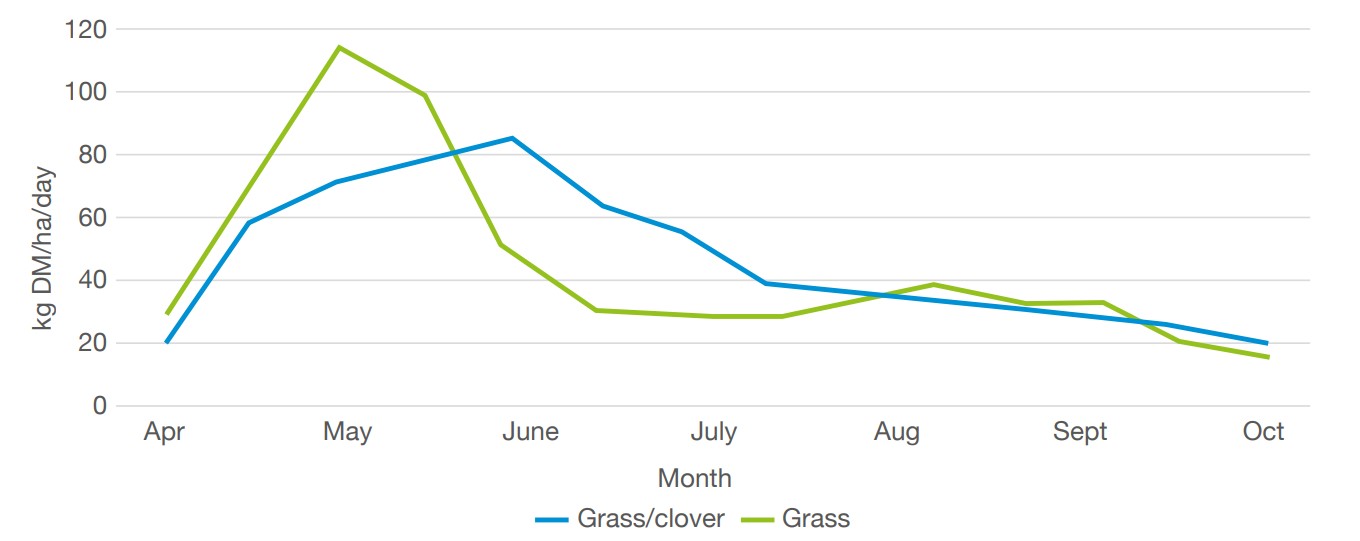- Home
- Knowledge library
- Why use white clover?
Why use white clover?
Read our advice on the benefits of using white clover, including feed value and soil structure.
Nitrogen fixation
Bacteria living in nodules on clover roots convert nitrogen from the air into nitrates. These stored nitrates are released to the surrounding plants and following crops through root decay and the new roots and nodules that grow to replace them.
In a well-balanced and stable grass/clover sward (20–30% clover), the potential nitrogen supply generated through the fixation process is equivalent to 180 kg N/ha. It is often difficult to decide how much nitrogen will be supplied because clover content can change from year to year and within a given season. Full clover development does not normally take place until late spring onwards.
Feed value
White clover has high nutritional value and, compared with grass-only swards, is particularly rich in protein and mineral content. Livestock find white clover very palatable, and digestibility is high because there is continual renewal of leaves and little stem development. This helps maintain dry matter intake (DMI) throughout the season.
For every 10% increase in the amount of clover in the sward, the crude protein (CP) content of first-cut silage increases by 1%. Assuming equal access, livestock may consume 20–30% more white clover than grass, which will increase liveweight gains and milk production.
Soil structure
White clover’s deeper taproot system can help tackle soil compaction. It causes more gaps between soil particles, which enhances movement of nutrients and water, and improves crop yields. Research shows that where clover is used, soil has better structure and crops can use fertiliser more efficiently.
Different growth pattern
Clover starts growing when the soil temperature is 8°C, as opposed to 5°C for grass, which means it has a different growth pattern. Clover is particularly valuable during the mid to late season when grass growth starts to fall away (see graph below).
Grass growth curve pattern

Useful links
Read the Establishing and growing clover guide
Healthy grassland soils factsheet
Healthy grassland soils pocketbook
If you would like to order a hard copy of the Establishing and growing clover guide, Healthy grassland soils factsheet or Healthy grassland soils pocketbook, please contact publications@ahdb.org.uk or call 0247 799 0069.
Improving clover on an organic Strategic Farm
Drought-busters for summer feed security
The information in these web pages was sourced from Germinal, Grassland Development Centre (IBERS, University of Aberystwyth) and Charlie Morgan (GrassMaster Ltd).
Topics:
Sectors:
Tags:

